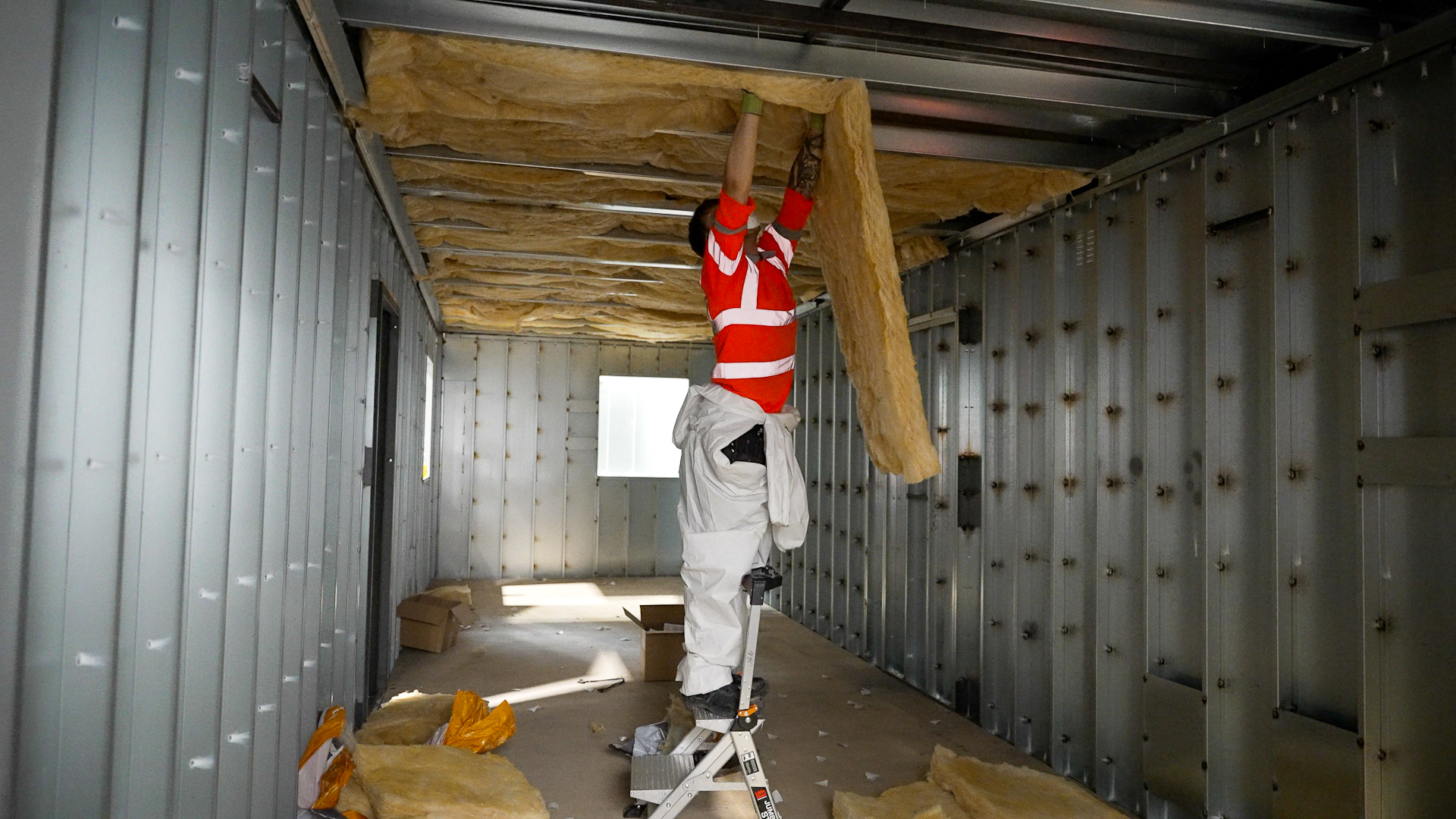The role of modular construction in a circular economy
5 min read | Published November 2025 | Updated November 2025 | Dan Pollard
A circular economy, one that prioritises a reuse of materials, has principles that can be applied to innovative methods of building like modular construction. From design, through to standardisation, the emphasis of a circular economy is on minimising waste and maximising resources – something that can be easily implemented in the controlled factory environment of an offsite construction firm.

What’s a circular economy, and how does it relate to construction?
A circular economy is an economic system that prioritises regeneration, focusing on the reuse of materials while eliminating waste and pollution.
While the construction industry is one of the largest generators of waste, with 63 million tonnes generated in England in 2022, it also has one of the best waste recovery rates, with 59.4 million tonnes recovered.
Recognising the potential of sectors like construction for economic growth, waste reduction and lower emissions, the UK Government’s Circular Economy Taskforce was started to help different industries in the push for a circular economy.
Its principles can be applied across multiple sectors, placing emphasis on sustainable material management as finite resources, like oil and gas, become depleted.
According to the UK Green Building Council, these principles span five key areas in construction; maximising reuse, design for optimisation, use of standardisation, products as a service, and minimising waste.
How can circular economy principles be applied to modular construction?
As an innovative building method, modular construction already uses lots of circular economy principles.
The five circular economy principles from the UK Green Building Council can be applied to offsite manufacturing in the following ways:
The controlled factory environment used in modular construction is ideal for implementing these principles – from the use of concepts like Design for Manufacture and Assembly (DfMA) to the adoption of digital technologies like real-time data visualisation platforms.
The circular economy in practice in modular construction
DfMA – an engineering method that focuses on simplifying building designs – plays an important part in offsite manufacturing, and in turn, an important part in the circular economy.
It’s more than a methodology – it’s a mindset, bridging the gap between an architect’s vision and a factory’s capability. In our corner of the modular construction world at Thurston Group, we’ve embedded DfMA into every stage of our delivery.
We design with production in mind, planning welds and fit-out sequences, before our engineers and production teams walk the lines together, reviewing modules mid-build and constantly feeding lessons learned back into design. This results in fewer redesigns, and therefore less waste, helping us hit the principle of minimising impact whilst maximising performance and efficiency.
We’ve also taken a kit-of-parts approach to ensure repeatability, using common structural platforms that can be reused across multiple sectors, with adjustable parameters for project-specific needs. While we have flexibility on surface layouts, specifications and finishes, consistency remains at the core of what we do, driving reliability and cost control through standardisation.
One of the biggest things that can help drive a successful circular economy is digital transformation. In practice, moving to digital platforms for inventory management and production delivery ensures transparency and traceability across supply chains, while improving resource efficiency.
The circular economy in effect at Thurston
At Thurston, we’ve implemented WrxFlo dashboards (customised, real-time digital interfaces) across our four sites to give us one live, transparent source of truth and output across every factory. Every component, weld, and inspection is logged through digital ITPs (Inspection Test Plans), giving full traceability from fabrication to site.
This digital backbone lets us make informed decisions and maintain consistent standards across every site, again minimising wasted product and ensuring that time and materials are utilised efficiently. We’re also now using digital twins to further build our production insights, linking data from design through to delivery.
Modular construction companies across the UK are key to reducing the wider construction industry’s environmental impact, and we’re proud be turning talk into action, putting the circular economy at the heart of what we do.
As an offsite manufacturing leader, we’re proving that industrialised construction is an achievable, scalable reality, promoting cleaner, greener production, with manufacturing excellence at the core.
If you want to be a part of the future of green building, the opportunity lies in modular construction.
Speak to our team today to find out how we can bring circular economy principles into your next construction project and help you to reach your carbon reduction goals.
Read our Other Recent News
FAQs – Cabins
Covering the most frequently asked questions about the cabins and relocatable building products offered at Thurston Group.
3 min read | Matt Goff
The key building and fire safety regulations we’re meeting and exceeding in 2025
To help you stay in the know of the current requirements for builders and offsite manufacturers, we’ve prepared a handy guide covering what the key UK building and fire safety regulations are heading into 2025.
3 min read | Marc Johnson